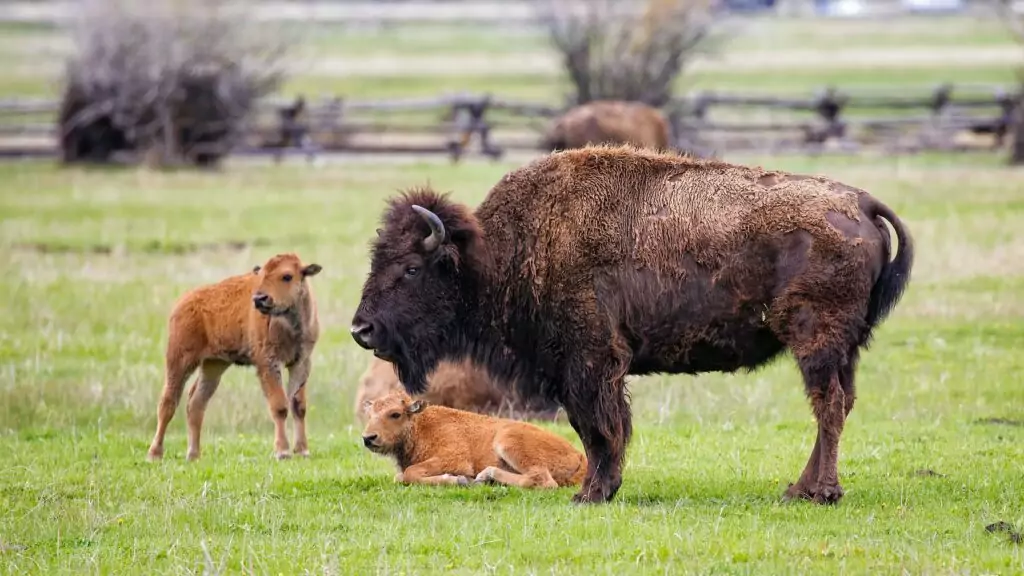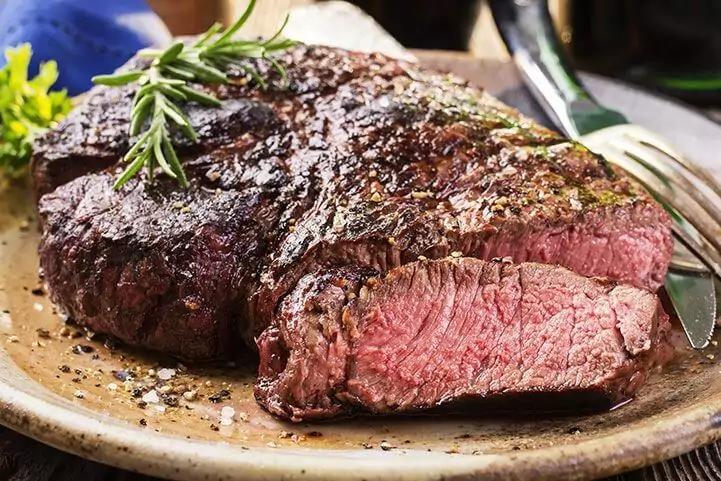While Americans are highly accustomed to eating the standard poultry, beef, and pork, there is a whole wide world of different protein options to choose from. Meat production is often criticized for its environmental impact, yet meat consumption continues to climb. Americans eat nearly 40% more meat than we did in 1961. Livestock farmers are exploring different options for nutritional, financial, and environmental benefits–and red meat alternatives such as beefalo, bison, and yak stand to give beef a run for its money.
The American bison, often referred to as a buffalo, is the largest native animal in North America. According to the National Bison Association, they are well-adapted to different climates and are raised according to their natural tendencies to graze a variety of grasses, seeds, and plants in pastures all over the country. It’s federally prohibited to give them growth hormones, so responsibly raised bison meat is easy to find and can be purchased from local producers as well as larger grocery stores.
Yaks are a very versatile animal and are usually raised free-range and grass-fed. They are known to be easy animals to keep and can provide high-quality dairy products, fiber, hides, horns, and delicious red meat. Yaks are hardy and are easy to calve–leaving few disadvantages to raising them.

But What is Beefalo?
According to the American Beefalo Association, beefalo is a mix of ⅝ domesticated cattle and ⅜ native American bison, and now a USDA-recognized breed. Any higher percentage of bison and the animal is referred to as a cattalo. Cross-breeding means beefalo take on the best traits of both animals. They are gaining popularity as a source of meat for several reasons:
- They have a longer reproductive lifespan.
- A small birth size makes for easier calving, and they grow quickly after birth without grains or hormones.
- They are adaptable to both cold and warm climates.
- The animals are highly disease-resistant.
- Produces a high-quality, well-structured meat
- Require 40% less cost and inputs than conventional beef
Although the two species were cross-bred prior, the first fertile beefalo wasn’t produced until the 1970s. After more testing of the meat in the 1980s, the USDA determined there were enough differences between beefalo and beef that they needed to be classified into separate categories. In recent years, beefalo has gained more popularity as its nutritional and environmental benefits become more widely known.
Ground Beef Nutrition Vs Ground Bison, Beefalo, and Yak
Based on testing from the USDA, beefalo demonstrated higher levels of vitamins, more protein, ⅓ less cholesterol, 79% less fat, and 66% fewer calories than conventional beef. It’s even won the “Best Steak” award at the American Royal Steak Competition.
According to the International Yak Association, yak meat is quite lean. It does not marble like conventional beef, rather the fat forms on an exterior layer that is easy to cut away. The flavor is mild, clean, and juicy due to its higher moisture content.
Similar to yak meat, bison also has no marbling, and therefore, a richer red color than beef. Its flavor is slightly sweeter than beef while containing fewer calories.

Explore the following nutrition information for a more detailed comparison between the different meats:
- Beef (90/10) (100g): 185 cal; 13g fat; 18g protein
- Beef (80/20) (100g): 243 cal; 19g fat; 18g protein
- Bison (100g): 179 cal; 9g fat; 25g protein
- Yak (100g): 150 cal; 7g fat; 20g protein
- Beefalo (100g): 143 cal; 5g fat; 23g protein
Take advantage of these red meat alternatives with our Bison Meatloaf recipe!
Bison, Beefalo, and Yak Farms in Michigan
Ready to experiment with some new proteins? Check out our Find Food & Farms directory to source local bison, beefalo, or yak!
Carrie Hause is the Digital Media Specialist for Taste the Local Difference. Contact her at [email protected].
